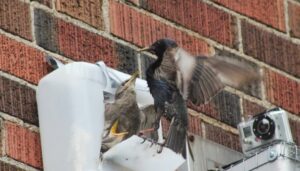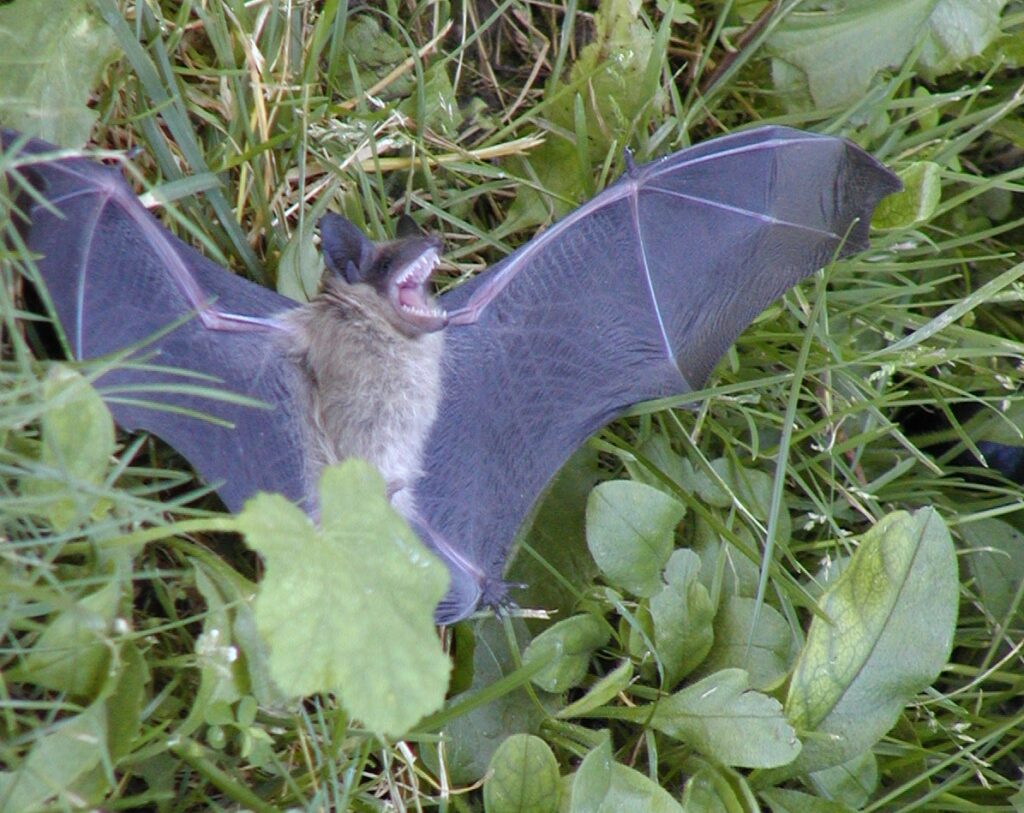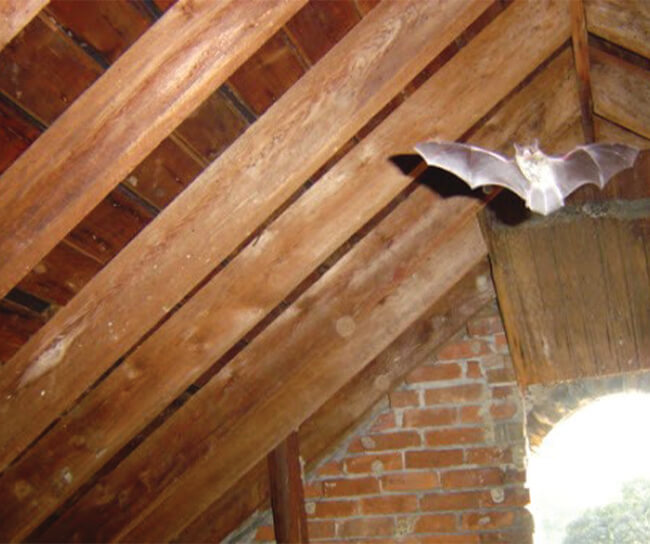At first glance, it is easy to mistake a bat’s early evening flight for that of a bird hurrying home to roost. Bats and birds are both warm-blooded animals with wings, but the similarities end there. Our Skedaddle animal services team in Whitby can help answer the question of how do bats fly and what makes them so different from birds.
Physiological Adaptations
Everything about a bird’s body adapts it to life on the wing. Its bones contain air spaces to make them lighter in weight, and aerodynamic feathers cover its body. Females avoid the inconvenience of flying while pregnant by laying eggs instead. A bird even accomplishes the most basic biological process of excreting waste in a weight-saving manner: instead of bulky liquid urine, nitrogenous wastes are concentrated into a lightweight solid.

Bats, on the other hand, are mammals just like dogs and people. Their bones are just as dense, and their body coverings just as furry and drag-producing. Females fly while pregnant, give birth to live young and nurse their babies with milk. They excrete waste in the same heavy, water-dependent way. Even though they have many adaptations for flight, their mammalian characteristics limit their size to a fraction of that of the largest birds.
Flight Patterns
The wings of bats and birds are very different. What looks like a bird’s fingers are actually feathers growing out of a fused combination of the wrist, finger, and hand. A bat’s fingers, in contrast, are extremely long and grow directly out of the wrist. The wing consists of skin stretched across these fingers. It is thin and flexible, allowing for less drag and an increased ability to capture air.
The dissimilarities in physiology and wing design result in different flying styles between birds and bats. Multiple finger joints give a bat considerable control and allow it to make subtler movements not possible for birds. This level of command allows bats to maneuver through treetops and around objects as they chase insects. A bat’s flight muscles are smaller than the large breast muscles of birds, so their wing beats are slower and more deliberate. Their weaker muscles also prevent them from being able to take off from the ground the way most birds do. Perched on tiny legs, they cannot generate lift by running like ducks sputtering across a pod before takeoff. A bat on the ground instead must use its claws to climb, then drop from a height to begin flying.
Bat Senses
Bats can see as well as people do, and some species even see in colour. However, the sense that primarily helps them make a living is hearing. As they fly, bats emit high-pitched sounds from their mouths and sometimes from their noses. Here are some things a bat can determine about an insect or other object based on the echoes of its own voice:
- Size: The more of the sound that returns, the bigger the object.
- Distance: The longer it takes to hear the echo, the farther away the object is.
- Side: The right ear detects an object to the right, and vice versa.
- Height: Sounds hit tiny folds on the ear, giving clues as to whether the insect is above or below the bat.
- Trajectory: Sounds bouncing off objects moving away from sound lower than the original sound.

Next time you see something flying overhead at dusk, watch carefully to determine whether it is a small bird or a bat. If you see a bat on the ground where it can’t fly away, you need animal services in Whitby to determine the cause. Contact Skedaddle Humane Wildlife Control for help with bats on your property, or if you suspect they are roosting in your attic.



